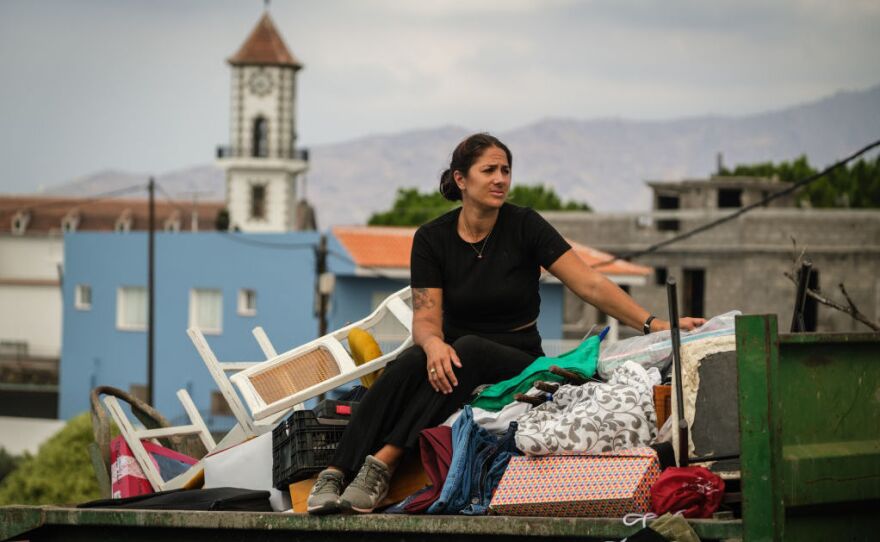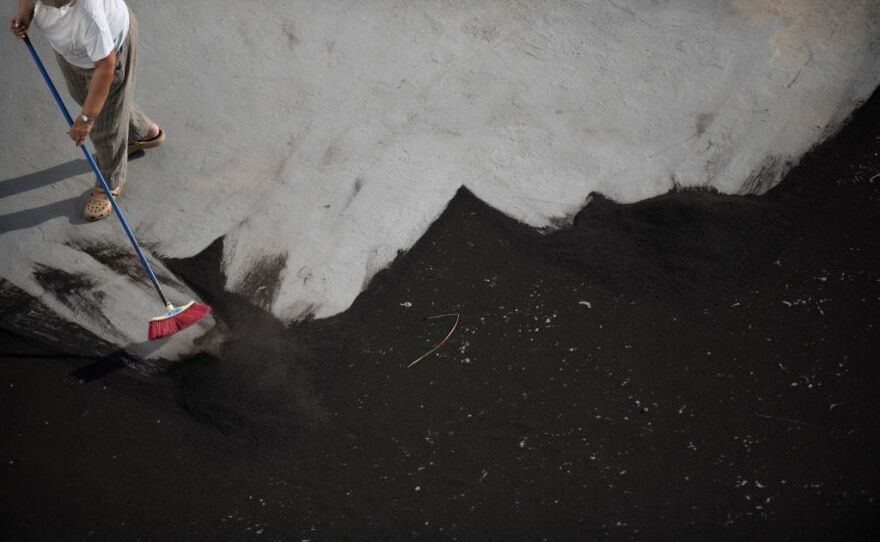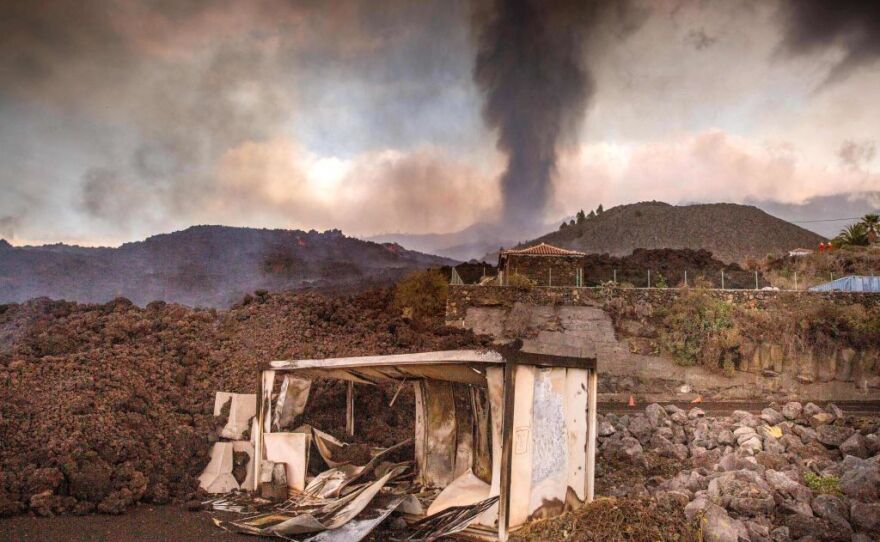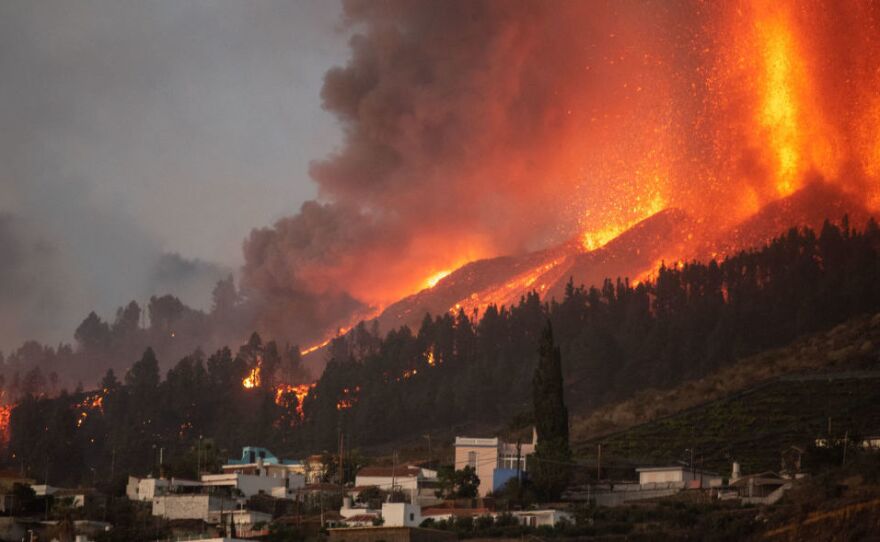Estefania Martin never expected lava to arrive at her front door.
"I feel like I'm living in a comic book," she says.
Martin lives on the island of La Palma, one of the Spanish Canary Islands off the northwest coast of Africa, where the Cumbre Vieja volcano has been spewing lava and ash for two months.
"Ashes started raining from the sky. We couldn't breathe. Every day there was something new - the thread of lava redirecting and coming our way," Martin says.
The lava is now about 400 yards from her home, forcing her family to flee the longest volcanic eruption on the island in 343 years. It's swallowed more than 1,400 homes and many of the island's precious banana trees and triggered more than 20 earthquakes just last Sunday.
The volcanic action has also become a tourist attraction. People have flocked to La Palma to ogle the bright red flames as they shoot hundreds of feet into the sky - sometimes sipping wine while shoulder to shoulder with the thousands of people, like Martin, who have had to evacuate.
"People who visit cannot imagine the worry, the sadness, the uncertainty about where you'll be tomorrow and what to do with your life, and that you might have even lost your job," Martin laments.
A 72-year-old man recently died while sweeping ash off of his roof.

It's been 50 years since a volcano erupted on La Palma.
"I think people hadn't realized what an eruption entailed," says Carmen Solana, a volcanologist at the University of Portsmouth, who grew up in the Canary Islands. She says these kinds of prolonged eruptions aren't that unusual and often last between one and three months. But she said that didn't make it any less heartbreaking, when she visited the island in September.
"Within a week of the eruption starting, I had so many people asking, is it going to finish soon? It was just so hard to say, well, we don't know," Solana says.
Volcanic eruptions formed the Canary Islands millions of years ago. The islands are rugged, but this eruption hit one of La Palma's few flat spots that is used to farm bananas. The lava oozed easily over the terrain and incinerated banana plantations' irrigation systems.
Volcanic ash has blackened the fruit's skin, though they still taste OK. The Association of Banana Producers Organizations of the Canaries has created a new sticker for the disfigured fruit - with the word "volcano" and a photo of the fiery crater - to let people know the dark spots are just cosmetic.
Bananas are an important source of income for La Palma and, in the last two months, the industry has watched some $100 million slip away, according to the regional government.

While the ongoing eruption is destroying people's livelihoods, Solana says it is actually vital for the islands' survival.
"If this didn't happen, the islands would be completely eroded by the sea. We wouldn't have a place to live. So, while it is destructive and traumatic, it is a constructive process. The island is expanding and growing," she says.

Scientists say there are signs the eruption is easing. Sulfur dioxide emissions are down. There are less tremors. But, volcanoes are not predictable.
"Much less volcanoes like those in the Canaries," Solana says, "because they only erupt every 50 years, we don't have enough data to say, well, the majority have behaved in this way."
In the meantime, Martin isn't sticking around to find out if the Cumbre Vieja volcano is, indeed, running out of energy. "I can't sleep at night. The black sea of lava is so sad. I wish I'd never seen this," she says, trying not to cry.
Martin has been offered a job outside of La Palma and plans to accept it for at least two months. "I will come back. La Palma is my life, all my things are here, it's my home. But we'll never be able to forget this. This will leave a scar on us, a lot of pain," she says.
Nevertheless, Solana is positive that after the eruption, the reconstruction is going to be faster than people think, "And they will be able to recreate their livelihoods somehow again."
Christopher Intagliata and Jonaki Mehta edited the story for radio.
Copyright 2023 NPR. To see more, visit https://www.npr.org. 9(MDAzMjM2NDYzMDEyMzc1Njk5NjAxNzY3OQ001))







